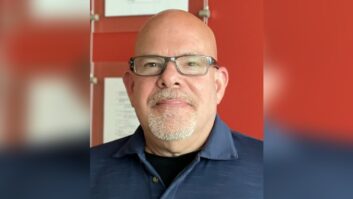LAS VEGAS�Last week�s Broadcast Engineering Conference was all about providing technical education for broadcast engineers and technicians through in-depth engineering tutorials and technical white paper presentations.
The conference is produced in partnership with the Society of Broadcast Engineers and IEEE. Sponsored by The Durst Organization and the Empire State Building, the conference began on Saturday and runs through Thursday. It offers a broad range of topics for the radio-oriented attendee.
The schedule delivers in-depth sessions on diversified technology such as FM combiners, AM antenna proofing, IP audio, broadcast plant design and even an RF boot camp of sorts.
�The Broadcast Engineering Conference highlights advanced technologies, applications and implementation challenges,� said John Marino, vice president of technology for NAB. �Attending the BEC is the best way to learn about new technologies, how to implement them and their challenges and opportunities.�
Other points of emphasis at this year�s conference include time-alignment of analog and HD audio, cybersecurity for broadcast facilities, IP networking and multiplatform broadcasting, Marino said.
While many radio-centric BEC sessions dot the schedule through Thursday, there also are some featured �crossover� sessions that will be of interest to both radio and television technicians and broadcast engineers.
�As radio and television technologies converge, we are seeing more and more sessions that apply to radio as well as television facilities,� Marino said. �Our BEC planning committee feels that radio engineers should learn about technologies that will likely impact them in the near future.�
For instance, Monday�s �Architecting a Stateless, Virtualized, Zero Fixed Cost Broadcast Facility� and �Can IP Dominate in Broadcast Facilities� are two such crossovers.
The first of these crossover sessions features Tom Ohanian from Cisco Systems to discuss software-defined storage and the resource reservation layers needed to elastically and dynamically provide a highly scalable, all IPbased broadcasting architecture.
Another crossover session will be presented by Ian Trow, senior director of Emerging Technology and Strategy at Harmonic, discusses IP in-depth. He will examine how the broadcast industry is falling in line with data networks and rapidly endorsing IP technology. Opinion is divided in the industry about how far IP can displace existing broadcast technology and this session will evaluate how far that environment envelope can be pushed.
Hot technology trends will continue Tuesday with a look at non-conventional coupling as a means to improve FM combiner and filter efficiency in the session �Improving FM Combiner/Filter Efficiency and Size Using Non-Conventional Coupling.� Dielectric�s Derek Small will present a paper that looks at the new technique with real-world case studies.
�Extending IP Audio to the Transmitter Room Using Part 101 or Unlicensed IP Radios,� also on Tuesday, studies a unique approach to using affordable wireless IP radios plugged directly into a studio�s IP audio network as a main or backup STL path. Andrew Calvanese, vice president of Engineering and Technology for Wheatstone, will examine the different considerations for using Part 101 licensed and unlicensed frequency IP radios, which can also be used for remotes and sports coverage.
Monitoring multiple sites in geographically diverse locations often presents challenges to shorthanded engineering staffs, which makes the �Total Facility Monitoring for the Modern Radio Station� session notable. Greater Media�s Paul Shulins will lead a discussion of monitoring transmitter parameters, PPM encoding integrity, room temps and STL status.
�My talk will focus on techniques I found to be helpful when I built one of the first major market consolidations in the country, and how that technology has been updated to reflect the needs of today�s modern radio facilities,� said Shulins. He feels broadcast engineers are challenged by the hundreds of status items that need to be tracked daily.
�We�ll review cost-effective solutions that have worked well for my facilities over the years,� said Shulins, who is director of Technical Operations for Greater Media�s Boston cluster.
FEMA�s Manuel Centeno will present Wednesday�s session �Continuity of Broadcast Operations During Disasters,� which will examine the steps broadcast engineers should take to make sure their radio stations are disaster-ready.
Centeno, FEMA�s Integrated Public Alert and Warning System (IPAWS) program manager, will talk about how to keep stations prepared for natural disasters and other disruptive events.
Cybersecurity is the focus of �Cyber-Security and Networking for HD Radio,� also on Wednesday. Ashruf El-Dinary from DTS, the new owner of the HD Radio brand, will identify potential gaps in network implementation that could leave digital broadcasts vulnerable.
The HD Radio developers say HD Radio equipment, if installed as intended, will not expose broadcast studio systems to any additional risk. However, network message authentication and content validation could leave digital broadcasts vulnerable.
Wednesday�s �RF Boot Camp 2.0� begins at 2 p.m. and will build on previous RF boot camp sessions at NAB. The session will focus on basic FCC processes, designing RF plant systems for microwave links and AM, FM and TV stations.�
� copyright 2016 NAB
�










